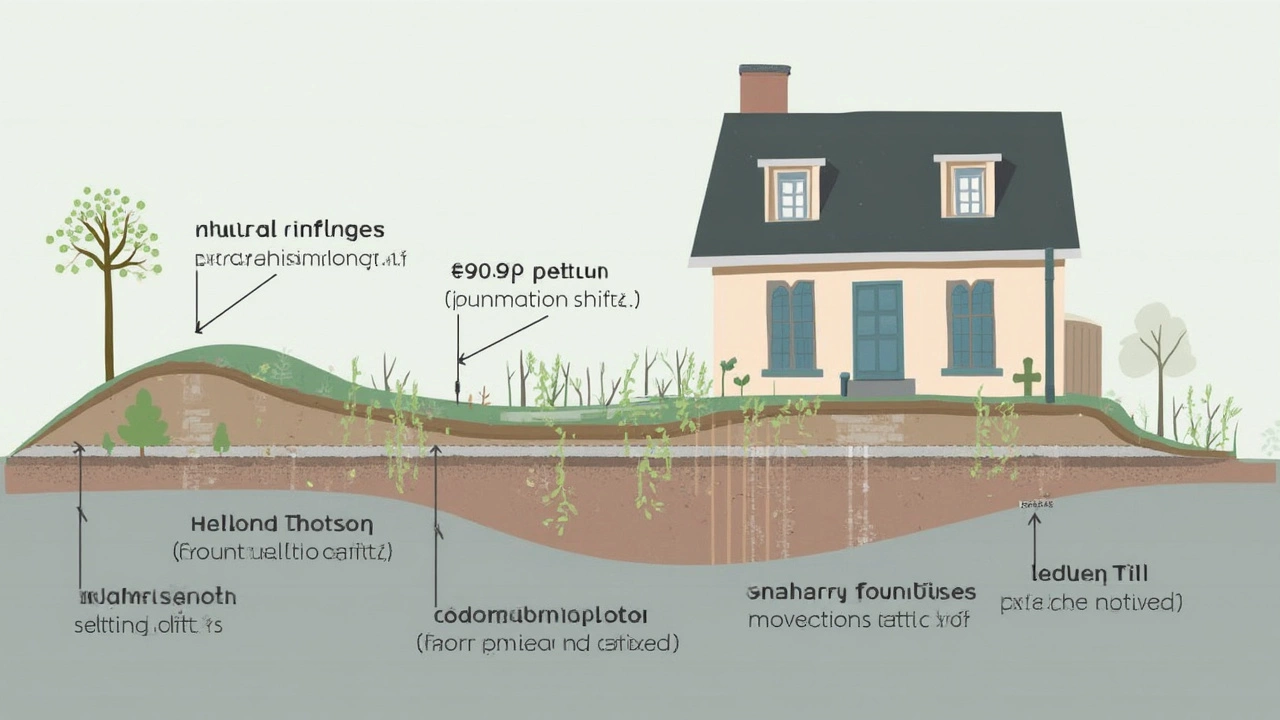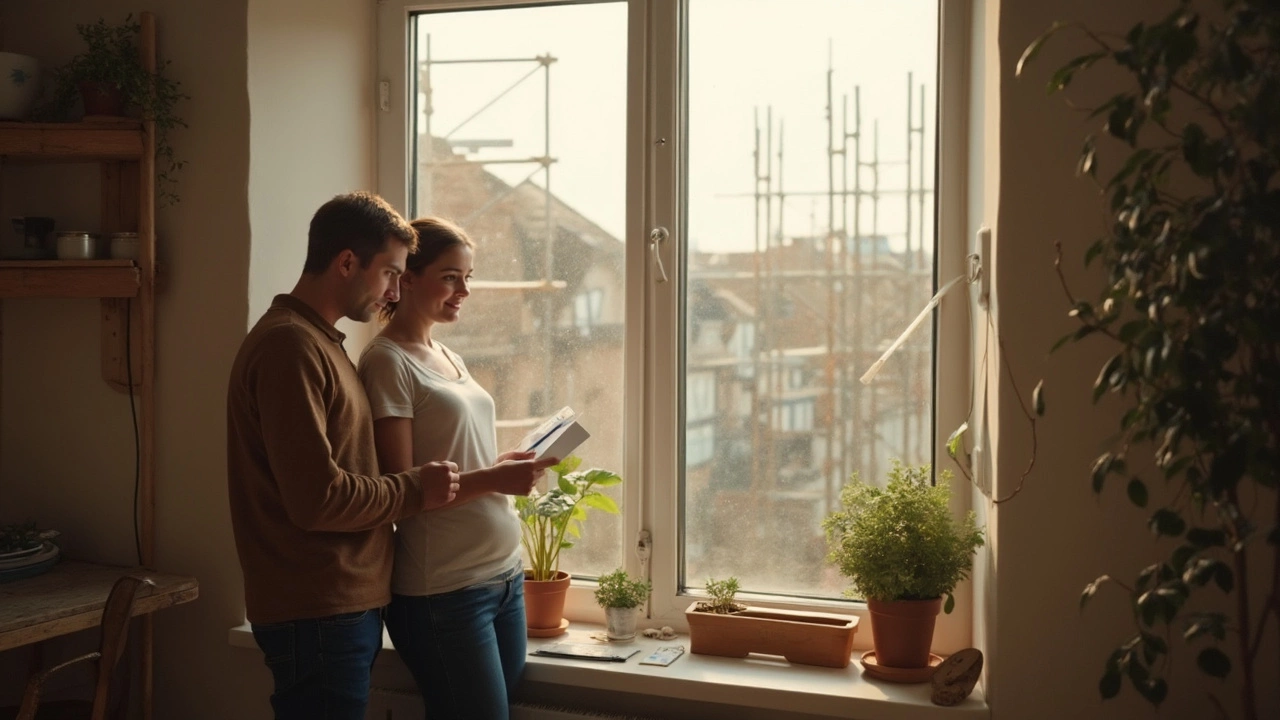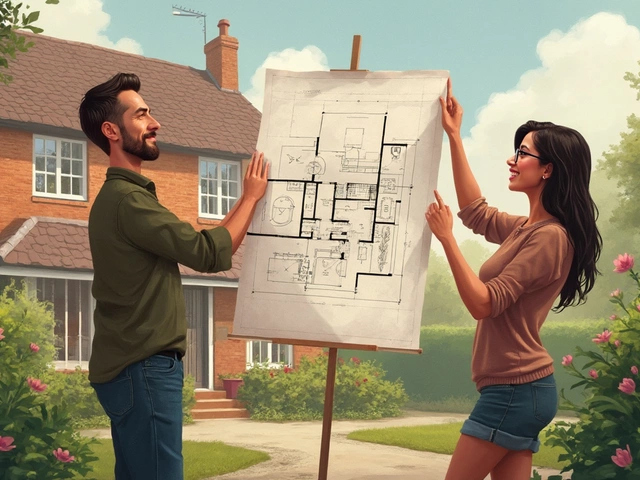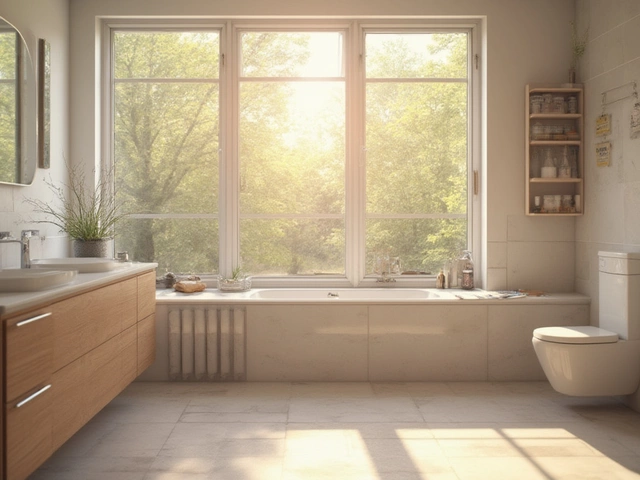Ever wondered why your brand-new house starts making the odd pop or creak? It isn’t haunted, it’s just settling. Every new building, from a basic bungalow to a fancy glass tower, goes through a settling phase. Builders and homeowners talk about it a lot, usually when a fresh crack appears around a door frame or a floor feels just a little less level than the day you moved in.
This isn’t some construction myth or builder excuse. Settling is real, and it actually matters. If you know what to expect, you’ll save yourself a ton of worry over every squeak or wobble.
So, how long does it really take for a new building to settle? And what should you look for so you don’t mistake a normal shift for the start of a bigger problem? Instead of vague guesses, let’s get into the nitty-gritty of timelines, easy self-checks, and signs you genuinely shouldn’t ignore.
- What Is Building Settlement?
- How Long Does Settling Actually Take?
- Signs of Normal vs. Problem Settling
- How to Help a New Build Settle Safely
- When Should You Worry & Call a Pro?
What Is Building Settlement?
Building settlement is just a fancy way of describing how a new structure slowly shifts and adjusts as it sits on its foundation. Even if the builder did everything right, no house or building locks instantly into place forever. Over time, the weight of the structure pushes down on the soil underneath, which causes things to compress, shift, and adjust. This is totally expected—you’d be hard-pressed to find any new building settle experience that doesn’t come with at least a little movement.
Settlement isn’t the same as structural failure. It’s part of every building’s “break-in period”—but knowing the difference is key. Most movement occurs in the first year or two as new materials like concrete, drywall, and framing wood finish drying out and the soil compacts to support the weight above.
The main things that impact how a building settles:
- Soil type: Clay-heavy soils tend to shrink and swell way more than sandy soils, so they can lead to bigger moves.
- Foundation design: Deeper, reinforced foundations are less likely to move than shallow, basic ones.
- Weather and water: Wet conditions can cause the soil under your building to expand or erode. Dry spells can actually make clay soils shrink, giving you cracks or little dips in floors.
If you geek out on details, here’s a handy table showing average expected settlement by common foundation type:
| Foundation Type | Typical Settlement (First 2 Years) |
|---|---|
| Slab-on-Grade | Up to 10 mm (about 0.4 inches) |
| Crawl Space | Up to 15 mm (about 0.6 inches) |
| Basement | 10-20 mm (0.4 to 0.8 inches) |
| Pile Foundation | 5 mm or less (rarely noticeable) |
Basically, if you see a few hairline cracks or notice a slightly sticky door in your new build, it’s probably just the house doing what every new house does—settling into its spot and finding its “groove.” Problems start when things move fast, wide cracks show up, or anything seems to tilt. But a slow, minor shift? Totally normal.
How Long Does Settling Actually Take?
So you’ve just moved in, or maybe you’re about to get the keys—how long before your new place stops adjusting and creaking? Here’s the deal: most new building settle phases last between one and three years. If you’re in a house built on a standard poured concrete foundation, expect the most shifting in the very first year. Buildings settle as their weight compresses the soil, and moisture levels under the foundation slowly reach a steady state. In most cases, you’ll see the majority of changes—like nail pops, tiny cracks in drywall, and doors going a bit crooked—within the first 12 to 18 months.
Different factors matter. Here’s what can make your home settle faster or slower:
- Soil type: Clay-heavy soils expand and shrink with moisture, dragging out settlement for up to three years. Sandy soils tend to settle much faster.
- Weather: Lots of rain or drought in the first year will make soil movement more dramatic. Dry spells after a wet build season can cause sudden drops.
- Building materials: Wood frames shift more than block or steel. Timber absorbs moisture then dries out, pushing and pulling at joint lines.
- Foundation type: Basements and slab-on-grade homes usually settle more than homes built on piers.
Want quick facts? Here are some real numbers:
- Most drywall cracks or nail pops show up between 6–18 months.
- Floors might shift a few millimeters during the first year.
- Settling almost always slows down sharply after two years, and after three years, big changes shouldn’t happen unless there’s an outside problem.
Don’t get caught up stressing about every creak or line. Most settling is harmless and just part of the process. But keeping a log of what you notice, and when, helps if you need builder warranty work or want to check things before the deadline runs out.

Signs of Normal vs. Problem Settling
Every new building will settle, but not all settling is created equal. It helps to know which signs are totally normal hassle and which ones should send you hunting for a pro. Let’s break it down so you don’t stress over every minor crack.
First, here’s what usually falls into the "no big deal" category:
- Hairline cracks (less than 1/8 inch wide) in drywall, especially above doors and windows.
- Small gaps opening up at the corners of baseboards or trim.
- Minor unevenness in floors—think less than a quarter inch across a large area.
- Doors or windows that stick at first, but free up with a little adjustment or as indoor humidity changes.
Builders expect these things. Normal settling cracks typically show up in the first 12-24 months and don’t get dramatically worse over time.
On the other hand, here’s when your eyebrows should go up:
- Cracks wider than 1/4 inch, especially if they keep growing, or show up in your foundation.
- Doors and windows that suddenly can’t close at all, or won’t stay open without propping.
- Floors sloping noticeably or soft spots underfoot.
- Big gaps between walls and ceilings, or between stairs and the wall.
- Diagonal cracks running from window or door corners toward the ceiling.
- Bowed walls, or signs of water leaking into the basement or crawlspace.
Here’s a handy table to spot the difference fast:
| Sign | Normal Settling | Problem Settling |
|---|---|---|
| Cracks | Hairline, less than 1/8" | Wider than 1/4", growing |
| Doors/Windows | Minor sticking, adjusts easily | Can’t close, or jam tight |
| Floors | Very slight dips | Sloping or spongy areas |
| Gaps | Tiny at trim | Big between walls/ceilings |
If you aren’t sure, the safe bet is to document what you see. Snap photos, jot down dates, and measure any cracks with a ruler. That way, if something normal suddenly turns into a real building settlement time problem, you’ll have good info to share with your builder or a structural engineer. Catching issues early makes fixing them way easier—and a lot less expensive.
How to Help a New Build Settle Safely
Settling isn’t just about sitting back and waiting for your floors and walls to shift. Turns out, there are some concrete things you can do to help a new building adjust without any drama or headaches later. Most folks think the build is over when they cut the ribbon, but care in those first months actually matters for the long haul.
The ground under your house, moisture levels, and even the weather will mess with how your home settles. It’s not about stopping the process—you can’t do that—but you can guide it so you don’t end up staring at a giant crack above your window.
- Monitor humidity: Try to keep indoor humidity between 40% and 60%. Wild swings dry out materials too fast and can cause warping or cracking. A little investment in a cheap hygrometer pays off.
- Let the house "breathe": Don’t rush to seal everything up tight right away. Good airflow makes a huge difference so new materials can adjust at a steady pace instead of all at once.
- Watch your outside drainage: Water pooling around your new foundation is settling’s worst enemy. Make sure gutters work, and that the ground slopes away from your house by at least 6 inches in the first 10 feet.
- Ease into temperature changes: Cranking up the heat (or AC) right after moving in sounds nice, but slow and steady is better for all those fresh materials.
- Hold off on major landscaping: The first year, leave trees, heavy patios, or ponds at least 10 feet from the house. Heavy stuff next to the foundation can make problems worse if soil shifts.
Here’s a quick table to put these tips into context and show what actually helps the most:
| Tip | How It Helps | Main Risk If Ignored |
|---|---|---|
| Monitor Humidity | Prevents wood shrinkage & cracks in drywall | Loose joints, warped floors |
| Good Drainage | Keeps soil stable under the foundation | Foundation settling, cracks |
| Slow Temp Changes | Reduces shock to fresh materials | Bowed floors, popped seams |
| Delay Heavy Landscaping | Avoids new pressure on unsettled ground | Foundation movement or sinking |
One important stat that might surprise you: About 80% of cosmetic cracks in new homes show up in the first year due to normal new building settle cycles. Most are totally harmless if you’ve kept an eye on the basics above. So, check on these things every couple of months—your house (and your future self) will thank you.

When Should You Worry & Call a Pro?
Most of the time, small cracks and the odd creak after moving in are nothing to freak out about. But there’s a line between normal movement and serious trouble. Knowing when to get a professional to check things can save you a nightmare later—like doors that just won’t close, or worse, a wall that starts to bow. Builders say it’s normal for a new building to settle for 12-24 months, but problems that show up fast or get worse in a hurry are a different story.
Keep an eye out for these specific warning signs, because ignoring them could cost you way more down the road:
- Cracks wider than 1/4 inch, especially ones that get longer or wider quickly
- Doors or windows that suddenly refuse to open or close, not just minor sticking
- Floors that feel sloped or have a sudden dip you can notice by walking across the room
- Water getting into the basement, crawlspace, or around the foundation—never just a little rain puddle
- New gaps between walls and ceilings, or between walls and floors
- Any sign that brick or stonework is pulling away from the building
Got any of these? That’s your hint to call in a structural engineer or a reputable builder for a real inspection. Forget DIY fixes for these kinds of things—they might look fine for a week but just cover up a bigger issue.
| Sign | Normal? | When to Worry |
|---|---|---|
| Small hairline cracks | Yes | If over 1/4 inch wide or spreading |
| Minor door sticking | Yes | If door won’t close at all |
| Gaps at floor/wall joints | Some are normal | If gaps grow larger over time |
| Sudden water leaks | No | Call a pro—the sooner, the better |
| Exterior brick separation | No | Get it inspected right away |
Sometimes, things get confusing because settlement gets mixed up with regular wear and tear. If your home is less than two years old and you spot anything from the “worry” column, don’t wait. Green lights for most of the process, but occasional red flags do need a pro’s eyes. Your best move? Keep clear records—take photos, jot down changes, and timeline events. If you notice repeat issues, or you ever hear a sudden bang or feel a jolt in the structure, that’s your cue to call for help fast.
Bottom line: routine checks can catch most problems before they get ugly. Settling is part of the new build package, but major changes aren’t. Getting new building settle worries checked by a professional early can save you from major headaches (and bills) later on.







